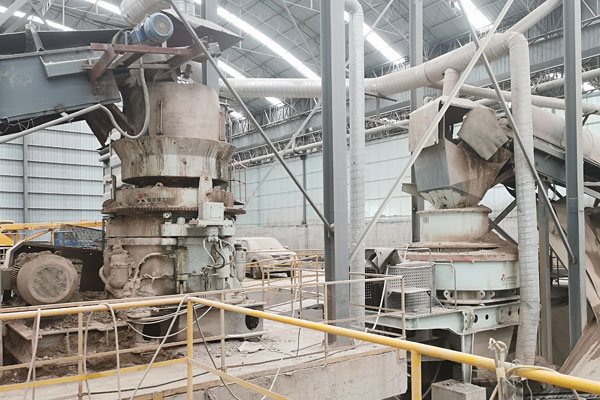Basalt is an igneous volcanic rock known for its hardness, density, and toughness. Due to these physical characteristics, crushing basalt effectively requires specialized crushers capable of handling hard, abrasive materials. Selecting the right crusher ensures optimal productivity, reduced maintenance, and cost efficiency in basalt crushing operations.
Characteristics of Basalt
-
Hardness: Basalt typically rates between 6 and 7 on the Mohs scale, making it harder than many other rocks.
-
Density: High density means heavier loads on crusher components.
-
Abrasiveness: Basalt is abrasive, accelerating wear on crushing surfaces.
-
Strength: It has high compressive strength, typically around 100-300 MPa.
These properties make basalt more challenging to crush than softer rocks such as limestone or sandstone, requiring crushers designed to withstand high stresses and abrasion.

Types of Crushers Suitable for Basalt Crushing
1. Jaw Crushers
How They Work: Jaw crushers use compressive force where a fixed jaw and a moving jaw form a V-shaped chamber to crush the rock.
Suitability:
-
Ideal for primary crushing of hard, abrasive materials like basalt.
-
Robust design allows it to break large, dense basalt rocks into manageable sizes for secondary crushing.
-
Simple structure means easier maintenance and lower downtime.
Advantages:
-
Handles large feed sizes.
-
Low operational costs.
-
Reliable and consistent output.
2. Cone Crushers
How They Work: Cone crushers crush rocks by squeezing the material between a moving piece of steel (mantle) and a stationary piece (concave).
Suitability:
-
Excellent for secondary or tertiary crushing of basalt.
-
The compressive force effectively reduces basalt into finer sizes.
-
Available in various types like standard, short head, and multi-cylinder hydraulic cone crushers.
Advantages:
-
High crushing efficiency and output.
-
Adjustable output size and shape.
-
Durable wear parts optimized for abrasive materials.
3. Vertical Shaft Impact Crushers (VSI Crushers)
How They Work: VSI crushers use velocity and impact rather than pressure to crush rock, accelerating the rock against hard surfaces inside the crusher.
Suitability:
-
Often used for final shaping and crushing of basalt to produce sand or fine aggregate.
-
Less abrasion on the crusher parts compared to HSIs when crushing basalt.
-
Provides excellent particle shape, which is important for high-quality concrete and asphalt.
Advantages:
-
Superior product shape and gradation.
-
Good for producing manufactured sand from basalt.
-
Energy efficient for fine crushing.
Factors to Consider When Choosing a Crusher for Basalt
-
Feed Size: Larger feed size requires a robust primary crusher like a jaw crusher.
-
Desired Output Size: Secondary or tertiary crushing may need cone or VSI crushers to achieve finer product sizes.
-
Abrasiveness: Use crushers with wear-resistant materials like manganese steel or specialized liners.
-
Capacity: Match crusher capacity with production goals to avoid bottlenecks.
-
Maintenance: Consider ease of maintenance and availability of spare parts.
-
Energy Efficiency: Crushers with lower power consumption reduce operational costs.
Crushing basalt requires crushers designed to handle its hardness and abrasiveness effectively. Jaw crushers serve well as primary crushers due to their robustness, while cone crushers are preferred for secondary or tertiary crushing to achieve finer sizes. Impact crushers, especially VSI types, are excellent for producing cubical shapes and manufactured sand. Careful selection based on the project’s feed size, desired product, and operational conditions ensures efficient and cost-effective basalt crushing.

